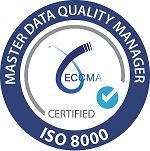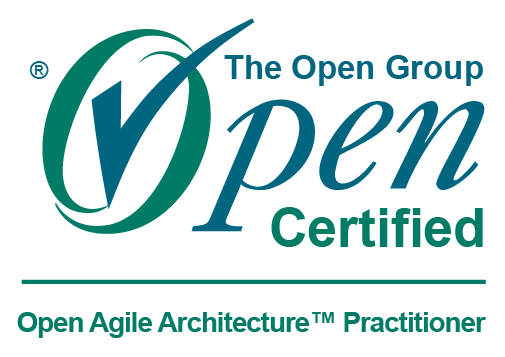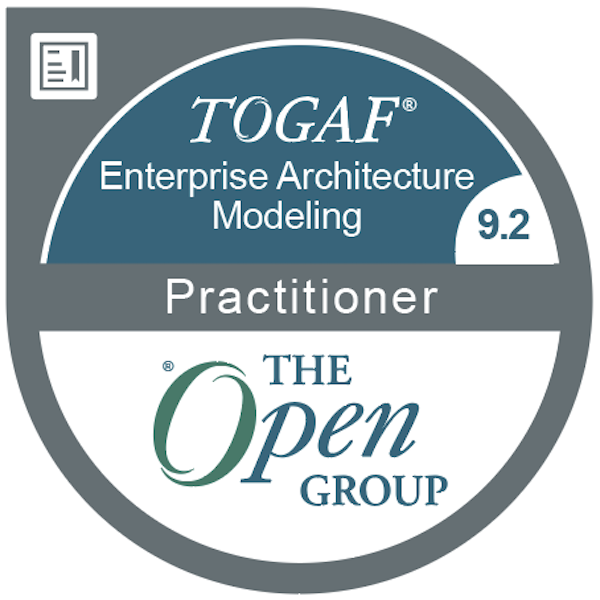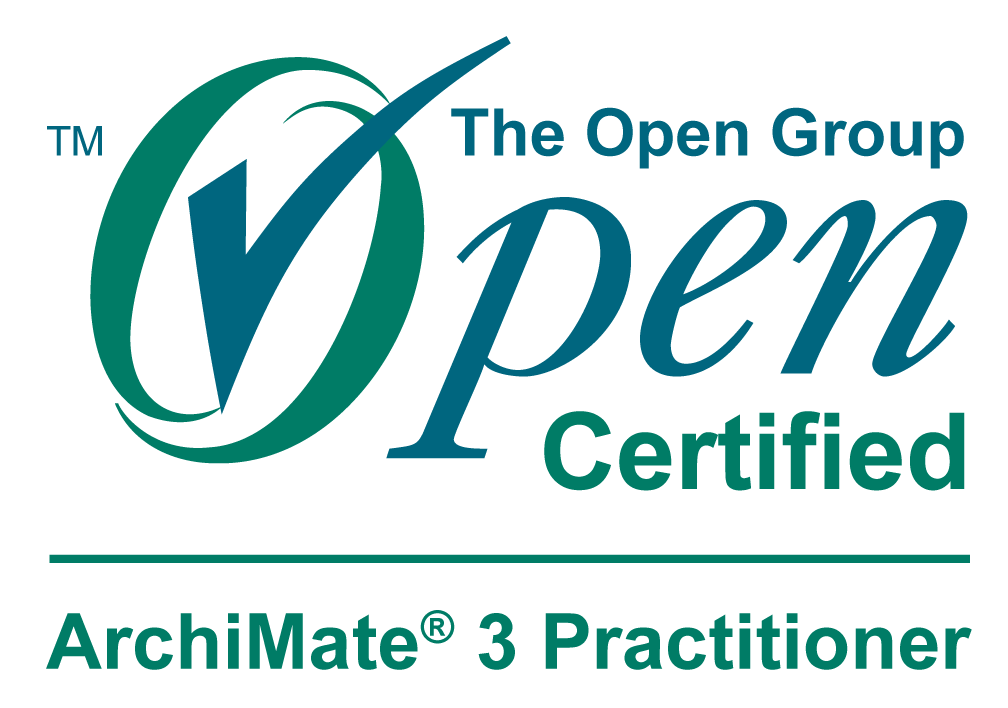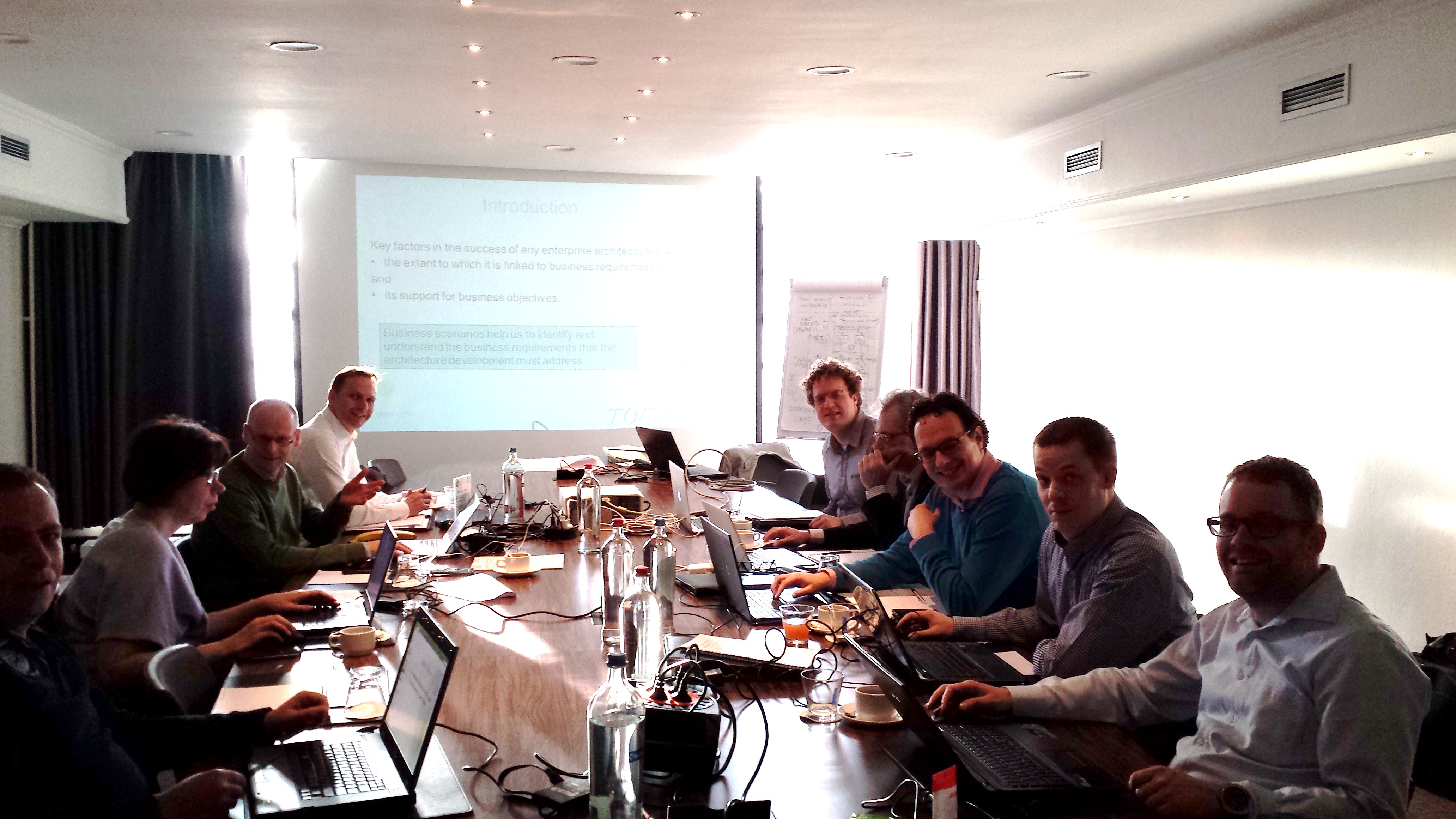Putting TOGAF EA (v.10) into Practice in an Agile way using Sparx EA
Designing and Implementing an Agile Entreprise Architecture in practice
Putting TOGAF into Practice (A 3 day practical course for Enterprise and Software Architects who are interested in putting EA in practice in an Agile way - see below)
Objective : This course aims at helping attendees understand how to put into practice an Enterprise Architecture to meet the enterprise strategies in an agile way using the guidelines of TOGAF EA (v.10) and the Open Agile Architecture (O-AA) standards.
Concepts and techniques that are explained during the course are progressively applied using a case study and different exercises on it.
Prerequisites : Previous experience in Enterprise Architectures or at least being aware of generic concepts of TOGAF such as the TOGAF ADM (Architecture Development Method)
Participant Profiles : Enterprise Architects, System Architects, Business Analysts, System Analysts, Software Designers
Detailed Description :
Essential concepts of Sparx EA for implementing an Enterprise Architecture
- Role of Sparx EA tool in implementing Enterprise Architecture Frameworks such as TOGAF, UAF and NATO NAF v4
- Configuring the Repository of Sparx EA on the basis of the TOGAF ADM phases,
- Putting in place the Architecture Capability Framework for Architecture Governance : Deliverables, Artifacts, Building Blocks,...
- Traceability from Drivers, Goals, Strategies, Principles to Capabilities and Requirements,
- Case Study: Presentation of the Case Study - an enterprise transformation issue (current state, target state). High-Level organization of the enterprise architecture,
Business Transformation : From Drivers, Goals and Objectives to the Architecture Vision
- The business architecture, its meta-model and viewpoints using Sparx EA,
- Configuring the Strategic, Segment and Capability Architectures,
- Re-formulating the enterprise strategy, customer segments and activity domains,
- Impacts on the Activities of the Value Chain,
- The Value Proposition Canvas to determine Segment Level Value Items and Services,
- Sequencing Value Items determined throughout the Value Proposition Canvas,
- Transforming the Business Model into an Operating Model,
- Assigning new responsibilities to capabilities based on strategies,
- Horizontal and vertical impact analysis to ensure coherent deployment of the Target Architecture,
- Managing the performance level of target capabilities,
- Impact analysis of Risk factors and Mitigation Actions on business functions,
- Assignment of Segment Boundaries to Stream-Aligned Agile Teams
- Exercise on the Case Study
- On the basis of strategies and baseline capabilities, assign responsibilities to existing capability components, make the impact analysis to plan a coherent deployment of the target architecture,
- Plan and specify risk mitigation actions related to business functions using EA.
- Plan and specify risk mitigation actions related to business functions using EA.
- On the basis of strategies and baseline capabilities, assign responsibilities to existing capability components, make the impact analysis to plan a coherent deployment of the target architecture,
Structuring Capabilities to mitigate risks and analyze Impacts throughout Architecture Layers
- The application & technology architecture their meta-model and viewpoints using Sparx EA,
- Structure Capabilities to track risk mitigation by function, adapt them to changing goals,
- Align the backbone of the Target Architecture with emerging business functions, underlying services and SLAs,
- Adapting underlying Business Process Models to strategic changes,
- Impact Analysis of changing capabilities until the technology layer,
- Exercise on the Case Study
- Structure Capabilities to mitigate risks,
- Elaborate SLAs for Services exposed by Business Functions,
- Assess Impacts of changing capabilities from Business until the Technology layer.
Modeling the Roadmap and Transition Architectures to Coordinate Implementation Projects
- Identify building blocks of the potential architecture roadmap :
- gaps between initial and target technical architecture,
- consolidated RoadMap to reach the Target Architecture,
- Capability Increments for the Architecture Roadmap,
- Work Packages of Actions to implement capability increments and dependencies,
- Management of projects portfolio for assessing business values of the projects on the basis of risks,
- ‘Coordinating’ Implementation Projects using RoadMap Modeling,
- Exercise on the Case Study :
- On the basis of the enterprise target architectures previously elaborated, establish the consolidated gap & dependencies matrix and define the work packages using Sparx EA,
- Coordinate Implementation Projects on the basis of business values and appropriate transition architectures to meet constraints of the consolidated target architecture.
Software Bounded Contexts and the Solution Building Blocks Plugging
- Determining the Software Bounded Contexts of the Domain Driven Design (DDD) to minimize dependencies between agile development teams,
- 'Strategy Aligned User Stories' to deliver the right value at the right time,
- Information flows between services,
- Constraints upon service components of the technical architecture,
- Determining expected behaviors from Solution Building Blocks,
- Plugging Solution Building Blocks into the Architecture Backbone,
- Exercise on the Case Study
- Determine the Software Bounded Contexts on the basis of Capabilities and Values to deliver,
- Adjust the architecture backbone on the basis of services, processes and roles
- Use them to prepare the « plug-in » of the solution building blocks
Conclusion
- Recap on the steps of the Architecture Development Process using Sparx EA : a panorama of artifacts
- Best Practices for efficient specification of Deliverables and Artifacts using Sparx EA
Notice : Some excerpts related to this training content are provided as part of the webinar entitled Enabling the Data Driven Agile Enterprise using TOGAF and O-AA
In case of an "on-site" delivery of this training, we can also adapt its content and case studies to your needs and business case in order to provide you with a good starting point and roadmap.
TOGAF, O-AA and ArchiMate are trademarks of the Open Group
UML and SoaML are trademarks of the Object Management Group (OMG).
